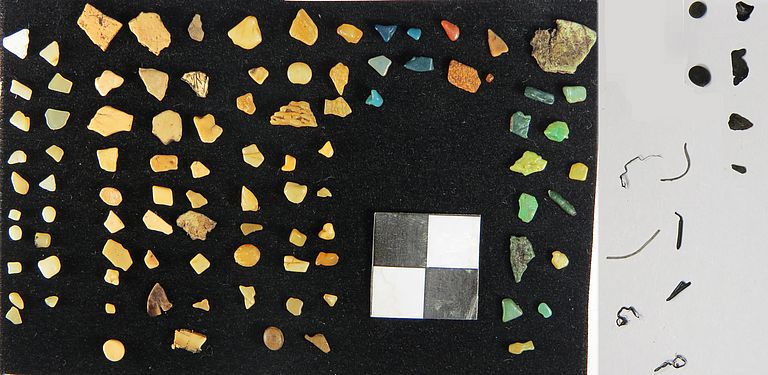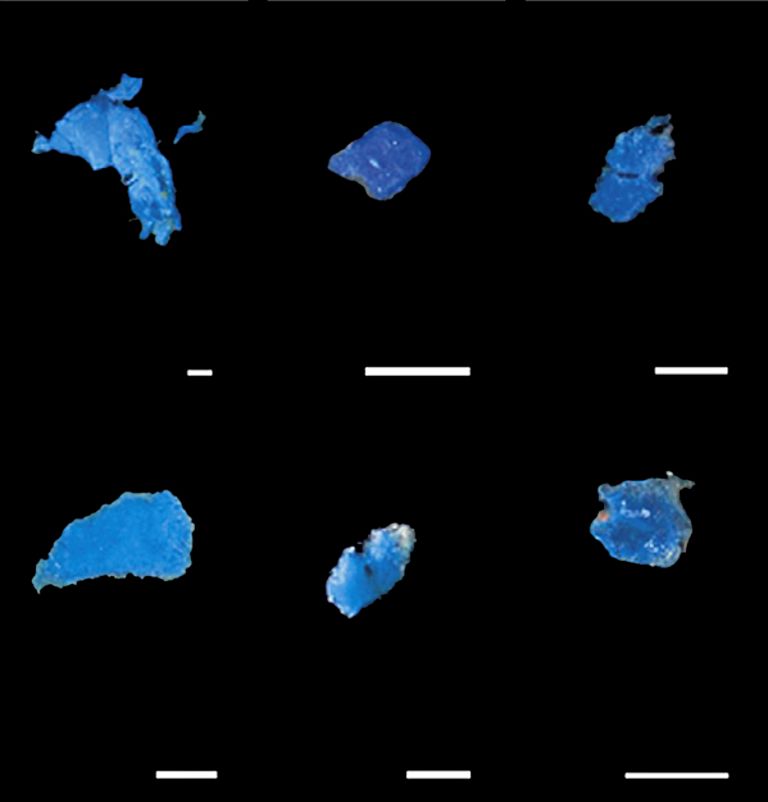Marine litter in remote regions of the oceans
Chilean-German researchers show impressive effects on the marine ecosystem
Since several decades, plastics dominate many product and packaging sectors. Unfortunately, more and more of these very durable products are polluting our oceans. Due to the drift with ocean currents they reach the remotest areas of our planet. There, the litter is ingested by many marine organisms as impressive images of a scientific study show which have now been published in the scientific journal Frontiers in Marine Science.
The researchers from various institutions in Chile, including the Millenium Nucleus ESMOI (Ecology and Sustainable Management of Oceanic Islands) and from the GEOMAR Helmholtz Centre for Ocean Research Kiel have taken water samples and documented that nearly 100 different species are affected by plastic pollution in the South Pacific between the Easter Island and South America.
"Particularly high (micro) plastic concentrations were found around the Easter Island and up to 2000 kilometres off the Chilean coast", explains Dr. Martin Thiel, lead author of the study from the Universidad Católica del Norte in Coquimbo, Chile. The researchers also evaluated reports about marine organisms entangled in old nets. "They are substantially more frequent in the Humboldt current than in the open ocean, whereas plastic ingestion of smaller particles is more frequent in the open ocean", Thiel continues. The study shows very clearly that the particles concentrate in the area of subtropical gyres, says the German marine biologist, who has been living in Chile for many years and since then working on the pollution of the oceans.
The burden of plastic waste becomes particularly clear when the scientists investigate what marine life ingests from it. "We have studied nearly 100 different species from the Southeast Pacific. Among them are 20 species of fish, more than 50 seabirds and almost 20 marine mammals”, explains Dr. Nicolas Ory, co-author of the study from GEOMAR. "In the stomachs are all sorts of plastic fragments, sometimes in alarmingly high concentration," Ory continues. These at least impair or weaken the living organisms and in the long term can lead to increased mortality.
"This is not good news," says Martin Thiel. "The garbage problem in the ocean is global and it has already arrived in the remotest regions of the world." This was also underpinned by the microplastic measurements during the recent Volvo Ocean Race, organized by colleagues of Dr. Ory at GEOMAR.
Reference:
Thiel, M., G. Luna-Jorquera, R. Álvarez-Varas, C. Gallardo, I. A. Hinojosa, N. Luna, D. Miranda-Urbina, N.i Morales, N. Ory, A. S. Pacheco, M. Portflitt-Toro and C. Zavalaga (2018): Impacts of Marine Plastic Pollution From Continental Coasts to Subtropical Gyres - Fish, Seabirds, and Other Vertebrates in the SE Pacific. Frontiers in Marine Science,5, https://doi.org/10.3389/fmars.2018.00238
High-res images:




